Home > Welcome > Sleep-wake pathologies > Excessive daytime sleepiness > Excessive daytime sleepiness
Excessive daytime sleepiness
Monday 17 September 2007
All the versions of this article: [English] [français]
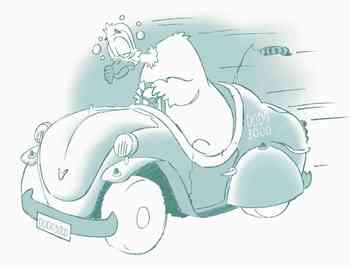
- A true emergency
"To be able to" sleep : not to be sleepy, to be able to maintain a sufficient arousal during the day.
Excessive Daytime Sleepiness may be directly implicated in one third of the fatal accidents on the highways.
That pathology, which sets a serious public health problem, still remains widely underdiagnosed.
Four pathological conditions responsible for excessive sleepiness are to be distinguished :
- Is sleep insufficient ?
- Is an external disease hindering sleep ? (snoring?).
- Is the need for sleep excessive ?
- Is sleep degraded by a parasomnia ? (a pathology that is intrinsic to sleep).
(Follow the links to unfold the four chapters that are introduced here).
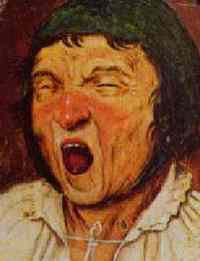
- Yawning, a strong signal
![]() Physiological sleepiness for a little nap in front of TV?
Physiological sleepiness for a little nap in front of TV?
![]() Excessive sleepiness during the lessons, in the bus or at the hairdresser...?
Excessive sleepiness during the lessons, in the bus or at the hairdresser...?
![]() Pathological sleepiness on the motorway ...?
Pathological sleepiness on the motorway ...?
Described in the past under the term of "Sleep Excess", EDS is the first sign to evoke a sleep disorder.
In fact, an important morbi-mortality stands behind such an ordinary symptom as the nap or the "ability" to fall asleep "on demand".
A decisional tree for sleepiness must allow to identify its cause.
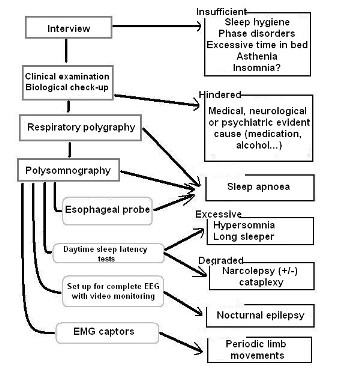
Sleepiness can be screened with the help of self-evaluation questionnaires like Epworth’s sleepiness scale.
The confirmation of an excess of daytime sleepiness commands a diagnosis.
The clinical investigation and the complementary examinations must allow to understand the reason for which the subject cannot satisfy his/her needs for sleep.
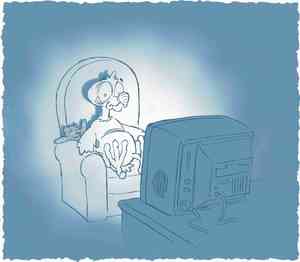
- Too much TV?
- Is sleep INSUFFICIENT ?
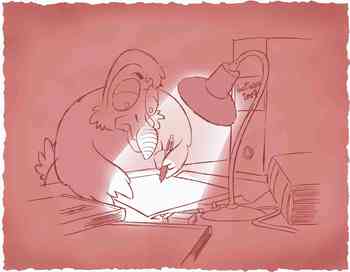
- Too much work?
- As a consequence of voluntary sleep deprivations of different origins and often rooted in "having fun" (leisure society).
- Because the sleeper’s environment is not compatible with sleep (especially in the little child : television, brothers and sisters ...), problems with noise, temperature, bedding ...
- At the occasion of "misunderstandings" concerning sleep hygiene (delayed schedules) which end up in [shifts of the periods of sleep outside the normal hours and in building up sleep debts. Cf
Nb: the signs of tiredness like clinophilia (the tremendous need to lie down in order to get some rest) do not always depend on the level of sleepiness and induce important behavioral errors if the subject tries to sleep more.
It is important to manage to distinguish well the difference between the sensation of tiredness and that of sleepiness.
The insomniac subject, for example, is often more tired than sleepy, and the practice of the nap in that context can only worsen insomnia. - Is sleep HINDERED ?
- The simple snoring :
The passing of the air in the throat during respiratory efforts induces turbulences responsible for a noise that is very unpleasant to the relatives but is not an illness. - Pathological snoring occurs if the diameter of the pharynx gets smaller. The resistance to the air increases and the sleeper has to increase his/her inhaling efforts, thereby increasing even more the turbulences.
These abnormal respiratory efforts during the night can lead to a chart of sleepiness and weight gain. The polysomnographic recording with an oesophageal probe sometimes allows to carry out the diagnosis of an Upper Airways Increased Resistance Syndrome (UARS).
- Sleep apnea is a more or less complete ventilation stop. The sleep apnea syndrome is defined since 1976. It gathers signs of pathological snoring and of excessive daytime sleepiness. The illness is an important risk factor of cardiovascular and metabolic diseases.
Sometimes, the sick person becomes aware of his/her illness at the occasion of a traffic (or work) accident in which the direct link with sleepiness can be established. - -Apart from these respiratory disturbances, the clinical examination and a standard biological checkup allow to rule out the most obvious medical causes :
- Thyroidian failure
- Hepatitis (viral or not)
- African sleep sickness (a parasite infection transmitted by the TseTse fly), Trypanosomiasis (article in French))
- Another general infection (fever, pain ...),
- A neurodegenerative (Alzheimer, Parkinson) or traumatic disease,
- A psychiatric disease (depression),
- Toxicomania (alcoholism, psychoactive drug, morphine like ... ... ) .
- Nb. Gastro-Esophageal Reflux Disease (GERD) is classically a part of the extrinsic causes of sleep disorders. One must think about it in front of a sleepiness linked to nocturnal embarrassments of acidity kind or burning sensation of the throat, sometimes combined with nocturnal coughing.
- Is the need for sleep EXCESSIVE ?
- Here, no lesional cause can be retrieved but the need for sleep truly amounts to a social handicap which is confirmed during a night’s recording followed by 5 naps during the day. The diagnosis of idiopathic hypersomnia is carried out if the naps’ sleep architecture presents no anomaly.
- Some depressions can be expressed through a reaction of hypersomnia.
The phrase "to seek shelter in sleep" evokes that tendency to seek oblivion in the ambiguous world of "the little brother of death". (Hypnos is the brother of Thanathos, Cf. mythology).
That form of hypersomnia (often majored by bedrest without sleeping (clinophilia) is characterized by a context of important psychological disturbances and the inefficiency of the stimulating substances like cafein, amphetamines, or the newer anti-sleep molecules like Modafinil) - Congenital big sleeper ?
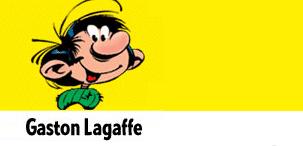
Excessive daytime sleepiness more willingly affects the subjects who belong to the group of the "big sleepers" and who experience trouble with living at the same rhythm as other people.
The interview shows that this somnological characteristic is present from very young age. The subject reports anecdotes of "a very good sleeper", "a marmot" because he/she falls asleep as soon as the occasion occurs.
The notion exists that he/she slept through the nights very early as a baby.
That type of sleeper will adapt his/her social and professional life to his/her need for sleep. That does not prevent him/her from being successful (Praise of Slowness, by Carl Honoré or Gaston Lagaffe by André Franquin ...) and, here, the risk of an accident is smaller (than in a case of acute deprivation) because the subject knows and controls his/her sleepiness much better than the young adult on a saturday night.
The subjects who are able to fall asleep at any time, in any place suffer in fact of excessive sleepiness, but (to the opposite of some young people after a party where they drink) manage it very well and do not often have accidents. - Is sleep DEGRADED ?
- The presence of abnormal sleep onsets (directly in REM sleep) during the course of the nap strongly evokes a Gélineau’s disease or narcolepsy (with or without cataplexy)
The subject suffers from falls (cataplectic attacks), of sleepiness and of sleep disturbances.
NB. The diagnosis of narcolepsy without cataplexy is carried out when the sample of cerebrospinal fluid shows a lowered rate of orexin which gives evidence of the (immunological) destruction of the cells which are implicated in the sleep-wake regulation. (In practice, the observation, during MSLT, of sleep onsets which occur directly in REM state is enough to carry out that diagnosis).
The use of particular "putting ups" with specific captors (Eeg and/or Emg) or the possibility of video recording (infrared camera) is necessary to establish some other diagnoses : - Restless legs and periodic limb movements,
- Nocturnal forms of epilepsy.
- REM sleep behavior disorder,
- Sleepwalking and other parasomnias
Sleep insufficiency is the main cause of daytime sleepiness and concerns 10% of the contemporaries.
The interview, possibly completed by the filling out of a Sleep-Wake diary, often allows to highlight the main errors in sleep hygiene which prevent sleep from being like it should :
Is sleep hindered by an exterior illness that disturbs its efficiency ?
-
- The presence of respiratory disturbances which may be responsible for a sleep fragmentation is screened by the polygraphic or polysomnographic recording of sleep which highlights three kinds of respiratory disorders :
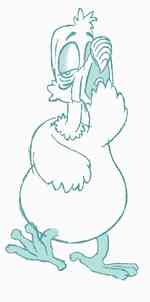
Is the need for sleep excessive ? (Naturally" higher than normal).
Is sleep degraded by a parasomnia ?->spip.php?article268] (The need for sleep is higher than normal because of an intrinsic illness).
Here, sleepiness can be measured objectively with the recording of the sleep onset latency during repeated nap attempts (every two hours). ("MSLT" : Multiple sleep latency tests).
![]()
The decisional tree which must lead to the diagnosis

All in all
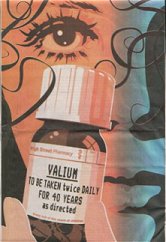
- For the next 40 years
The main causes of daytime sleepiness (that one must be able to screen systematically during the interview in consultation) are :
- Voluntary sleep deprivation and errors in sleep hygiene;
- The intake of tranquillizers and sleeping pills;
- Pathological snoring.
- The part of the restless legs syndrome, often mentioned in that context, is slightly overestimated from our point of view, and can lead to untimely prescriptions.
Some severe forms can though induce a real sleep debt with daytime sleepiness.
Only a polysomnographic recording of sleep allows to diagnose more rough or complex pathologies (PLMD, UARS, hypersomnia, epilepsy, narcolepsy etc...)

- More information...
- The reference website about yawning, a more serious matter than it seems... (English).

- A pictogram that is not wellknown enough
- National Center of Sleep Disorders Research
- sleepiness diary National sleep fondation (Pdf English)
- National Sleep Foundation (USA).
- Awake at the wheel(Pdf English)
- Health behind the wheel (in French). A good file about health from the AGF insurance compagnies.
- "Sleepiness behind the wheel kills as much as alcohol" (www.somnolence.be; Dr Stéphane Noël, Neurologist, sleep specialist, Bertrix, Belgium.)
- Yawning, a strong signal A well done project for radio ads (summer 2007), unfortunately not heard very often...